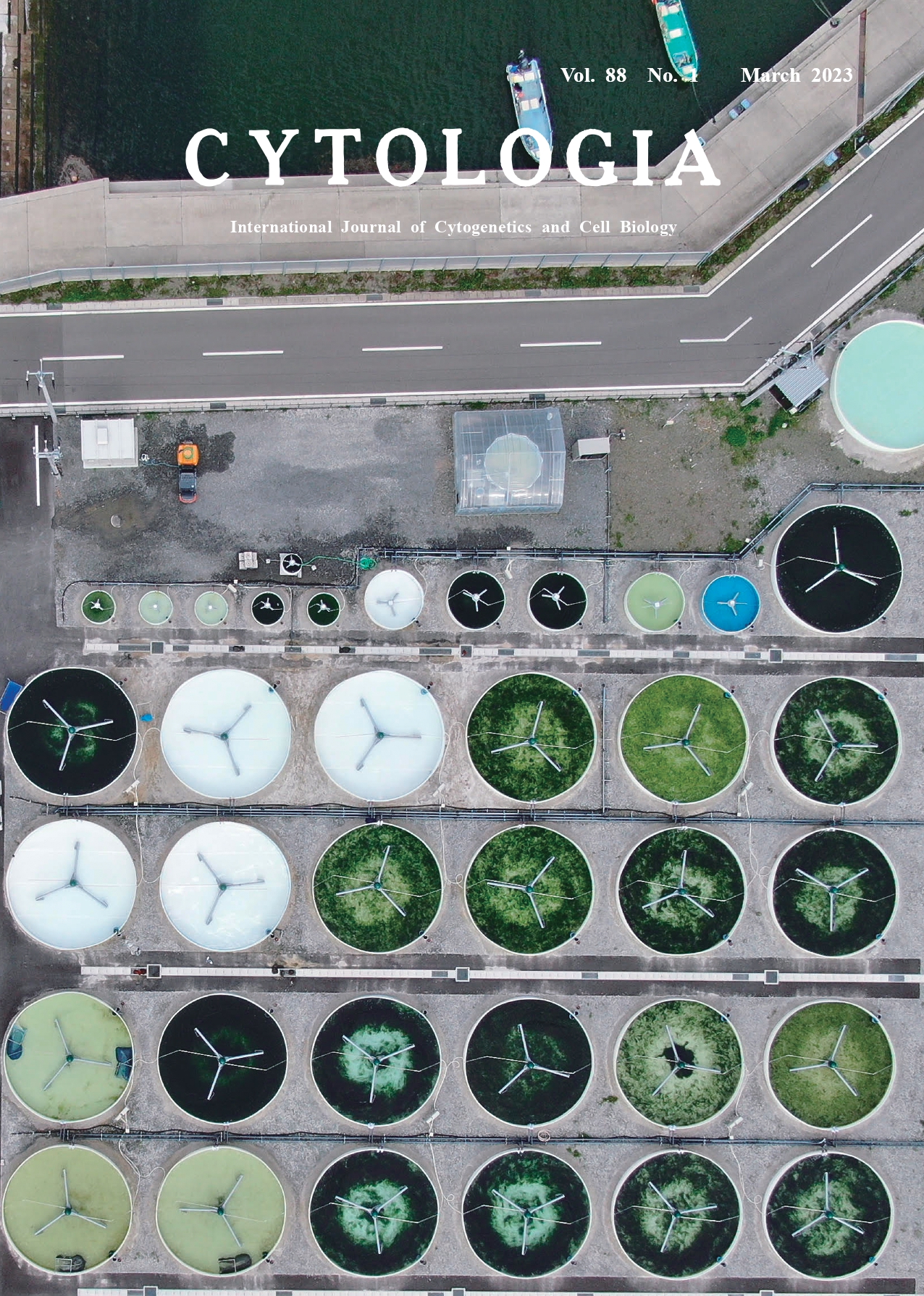| ON THE COVER |  |
||
|---|---|---|---|
| Vol. 88 No.1 March 2023 | |||
| Technical Note | |||
|
|
|||
Beyond the Valley of Death for Land-based Aquaculture of Seaweeds Yoichi Sato1*, Yuichiro Numata1, Yutaro Kinoshita1, Misaki Shinotsuka1, Katsunori Ono1, Shigeyuki Kawano2 and Masanori Hiraoka3 1 Bio-Resources Business Development Division, Riken Food Co., Ltd., Tagajyo, Miygai 985–0844, Japan 2 Future Center Initiative, The University of Tokyo, Wakashiba, Kashiwa, Chiba 277–0871, Japan 3 Usa Marine Biological Institute, Kochi University, Kochi 781–1164, Japan
“Valley of Death” exists between basic science to applied science, research results to commercialization, and pilot scale to industrial scale as a big gap to evolutionally transition. In recent years, university ventures and many start-up companies have accumulated excellent studies and technologies in the field of algae for food and bioresources. Nevertheless, to commercialize them, we can feel the existence of “Valley of Death” more strongly than ever before. The production yield of edible macroalgae is decreasing for various reasons, including long-term seawater temperature rising and regional depletion of nutrients in seawater. Significantly, the yield of Ulva prolifera has been markedly decreased; the species is an essential Japanese food for its excellent aroma and green color called AONORI in Japan. Therefore, several studies can develop new technologies to meet domestic market demand. Especially the land-based aquaculture system has been developed at Kochi University since the early 2000s. Firstly, the “germling cluster” method (GC) was developed to culture algal thalli into a land-based tank (Hiraoka and Oka 2008). This technique enables normal morphogenesis by culturing the zoids at high density and mutually recognizing them as substrates; the method was a breakthrough from two-dimensional farming using ropes or nets with spores in the sea to threedimensional farming using tanks in free-floating form. In addition, a multiple-tank system was developed to expand the volume according to the high growth rate of this alga (Tsubaki et al. 2017). As a result, several landbased aquaculture facilities, mainly in south-western Japan, have realized industrial aquaculture. The cover figure showed the industrial facility for aquaculture system for U. prolifera in Rikuzentakata City, Iwate Prefecture, established in October 2021. Circle tanks were improved for U. prolifera on those with paddle systems for microalgae. Ulva prolifera thalli produced by GC at an indoor incubator are transferred to small-size tanks (2 m in diameter) and start outdoor farming. After one week, thalli are transferred to middle-size tanks (3.6 m in diameter) and cultivated for one week. After that, they are transferred to one of the 24 large-size tanks (8 m in diameter) for one week and finally cultivated in three of the large-size tanks for one week before being harvested. This facility has a capacity of 5 tons of dry products per year. As a result of combining and optimizing many factors, such as the number and size of germlings, the scale of the tanks, and the rotations velocity of the paddles, we achieved year-round production for the first time in northern Japan. Although the optimal solutions for individual factors through the cultivation process could be assumed to some extent in the pilot-scale experiments, the stage of connecting them was precisely “Valley of Death.” After a year of repeated on-site verification, the facilities for the product were commercialized. When viewed from above as the picture, the 8 m diameter tanks look like a microplate with 24 holes. In order to develop new varieties, new locations, and to realize scale-up, it is necessary to start accumulating basic research at the microplate stage as a basic science and overcome a new “Valley of Death” again. We thank Dr. Yonezawa, C. and Dr. Murata, H. at the Graduate School of Agricultural Science, Tohoku University, for their support in taking the picture from a drone on July 25, 2022.
Hiraoka, M. and Oka, N. 2008. Tank cultivation of Ulva prolifera in deep seawater using a new “germling cluster” method. J. Appl. Phycol. 20: 97–102. Tsubaki, S., Zhu, W. and Hiraoka, M. 2017. Production and Conversion of Green Macroalgae (Ulva spp.). In: Kerton, F. M. and Yan, N. (eds.). Fuels, Chemicals and Materials from the Oceans and Aquatic Sources. John Wiley & Sons Ltd., West Sussex. pp. 19–41. * Corresponding author, e-mail:yoi_sato@rikenfood.co.jp DOI: 10.1508/cytologia.88.1 |
|||